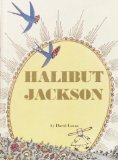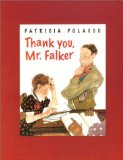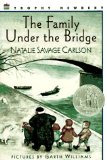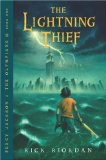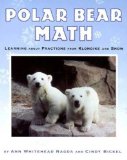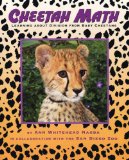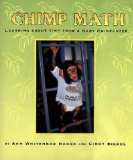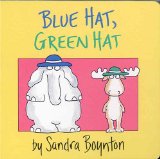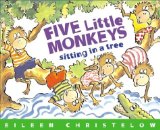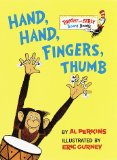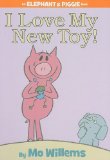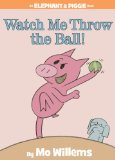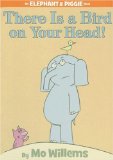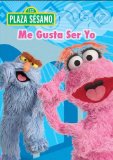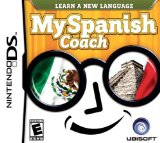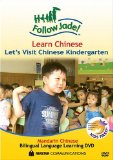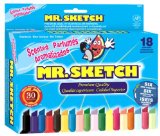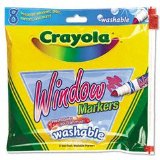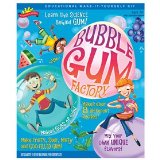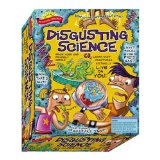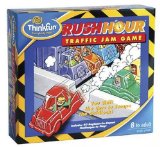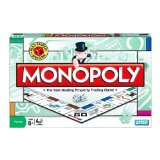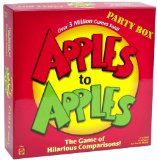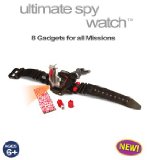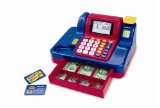I love to find books that excite reluctant readers. The key is to find that magic intersection that marries your child’s just-right level with content that matches their interest and a layout that is visually appealing (small chunks of text broken by pictures, larger font size, etc.). Alas, this is a moving target. I have an actual person that I select these books for, my youngest son’s best friend’s older brother who is a 4th grader with my oldest.
My mom friends have had success with these books for their reluctant boy readers and suggests you try them. If you want to purchase a book, click on the image of the book to buy at Amazon.com.
The Secret of Droon Series by Tony Abbott. If your son is interested in the world of wizards, but Harry Potter is too dense, this is a great series. The type is large. [ages 6-9].

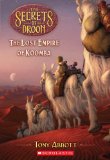
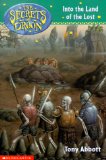



The Foundling and Other Tales of Prydain by Lloyd Alexander. Alexander’s epic Prydain series has 5 books: The Book of Three, The Black Cauldron, The Castle of Llyr, Taran Wanderer and The High King. The Black Cauldron won a Newbery Honor Award and the The High King won the Newbery Medal. Similar to The Hobbit series but not as intimindating to read, The Foundling is a “prequal” composed of 6 short stories with illustrations throughout and just 86 pages with decent sized type. If your child likes The Foundling, try the first book of the series called The Book of Three.
If your child likes the Beast Quest series and is ready to take the next level up, try this series.






Beast Quest series by Adam Blade. A great series for a newly independent reader about beasts who threaten a kingdom and a boy who can save them. Here are a few of them. [ages 6-9]






The Seven Wonders of Sassafras Springs by Betty G. Birney. When Eben McAllister is challenged by his pa to discover wonders in his small farming community, he finds the extraordinary in a doll, a bookcase, a saw, a table, a ship in a bottle, a woven cloth, and more. [ages 7-12]
If your child liked The Enormous Egg or How to Eat Fried Worms, this is a good choice.

Tales of a Fourth Grade Nothing by Judy Blume. [ages 8-11]
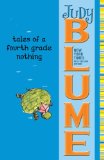
The Enormous Egg by Oliver Butterworth. Twelve-year-old Nate Twitchell hatches a strange egg laid by one of the hens on his family farm that turns out to be a baby Triceratops. If you can imagine The Mysterious Tadpole by Stephen Kellogg made into a novel in the vein of Homer Price by Robert McCloskey then that would be The Enormous Egg. [ages 8-12]

How To Train Your Dragon series by Cressida Cowell. A hilarious book in the vein of Diary of a Wimpy Kid about an young wimpy Viking boy named Hiccup who, like all Viking boys, must capture and train a dragon as a rite of passage. Hiccup emerges as a hero when his forbidden “dragon whispering” ability and wits saves his village from two gigantic dragons. [ages 6-10]


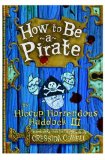


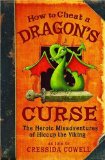
The BFG by Roald Dahl. [ages 8-11]

26 Fairmont Avenue by Tomie DePaola. Beloved author of Strega Nona fame has an autobiographical series covering 1938 through WWII. Not all the books are in print but you can find them at your public library in the biography section. [ages 7-11]
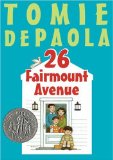


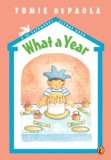



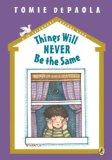
Because of Winn Dixie by Kate DiCamillo. This is probably one of the best books I’ve ever read in my life. When I read it with my daughter, I finished after she went to bed because it’s that good…a page turner you can’t put down. When I asked older siblings of my kids’ friends about what books they read over the summer, we’d both swoon with fond remembrance about how good this book is. Although the main character is a girl who’s adjusting to moving to a new small town after her mother leaves her and her father, the story will appeal to boys as well. Please read this book, it’s fantastic! This won a Newbery Award but if there were an all-time Newbery Award Winner, this book would win it! [ages 8-12]

The Trouble with Lemons by David Hayes. My daugher’s flute teacher said this was her son’s all time favorite book in 3rd grade. She said he was also a reluctant reader in 3rd grade.

The Year of Miss Agnes by Kirkpatrick Hill. Historical fiction about a teacher who comes to rural Alaska and changes the lives of her students. This book is pretty short with decent sized text. I’d try it as young as reluctant 3rd grade readers but really great for 4th or 5th grade boys as well. [ages 7-10]

Diary of a Wimpy Kid Series by Jeff Kinney. Both boys and girls can relate to this humorous “novel in cartoons” series about a boy coping with the social issues of middle school. [ages 7-10]
If your child liked Diary of a Wimpy Kid, try How to Train a Dragon by Cressida Cowell.
Diary of a Wimpy Kid
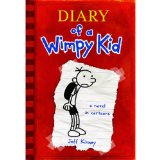
Diary of a Wimpy Kid: Rodrick Rules.
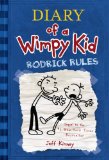
Diary of a Wimpy Kid: Dog Days

Diary of a Wimpy Kid: The Last Straw

Diary of a Wimpy Kid: Do-It-Yourself-Book (To create your own comic book)

From the Mixed-Up Files of Mrs. Basil E. Frankweiler by E. L. Konigsburg. I loved this book as a child and it’s being made into a movie which might prompt reluctant readers to seek this out. Claudia convinces her little brother, Jamie, to run away with her to the Metropolitan Museum of Art with her, not so much as she’s mad, but just for an adventure…to be different. They discover a mystery at the museum and end up at New York social fixture Mrs. Basil E. Frankweiler’s house to solve it. It’s a great read. It’s about the same level as the Ramona The Pest series.
I just tried this book out with my 10-year-old and she had difficulty getting into the book. The plot was confusing to her because it’s told from Mrs. Basil E. Frankweiler point of view as a letter she writes to her attorney, who has ties to the Claudia and Jamie Kincaid. [ages 9-14]

The EarthSea series by Ursula LeGuin. A reader suggested this series; see her comment below.




Where the Mountain Meets the Moon by Grace Lin. Grace Lin is the Amy Tan for the elementary school set. Where the Mountain Meets the Moon is an Asian-American version of the Percy Jackson series starting with The Lightening Thief. Where Riordan weaves in Greek Mythology into his plot, Grace Lin uses Chinese Folk Tales into a wonderful, inspiring and heart-warming story that teaches all of us to just… BELIEVE. This book was listed twice as a favorite book on my kids’ elementary school newspaper. [ages 8-12]

Rules by Cynthia Lord. A really wonderful story about a girl whose special needs brother and special needs friend help her to discover the courage to just be herself. Because the book is set in the present day and deals with topics that public school kids are familiar with such as fitting in, being embarrassed about people you love, and accepting special needs children, it’s very appealing and relatable. It’s a Newbery Medalist. [ages 8-12]

The Willoughbys by Lois Lowry. A funny tale of a dysfunctional family in which both the parents and children plot to get rid of each other. The kids, naturally, emerge victorious. Add in a loving nanny, an abandoned baby, a candy billionaire neighbor with a long-lost son and a happy ending. This book has largish type and illustrations scattered throughout so it’s a great read at the level of Diary of a Wimpy Kid. [ages 7-11]
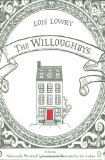
The Extraordinary Adventures of Ordinary Basil by Wiley Miller. A completely delightful story of a boy who finds adventure when a man in a hot air balloon passes by his window. The book has large print and illustrations so it’s perfect for reluctant boy readers. If he enjoys this book, there is a sequel, Attack of the Volcano Monkeys. [ages 7-10]
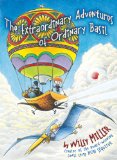
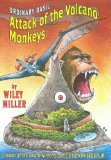
Shiloh series by Phyllis Reynolds Naylor. This was a book that my oldest daughter’s entire grade was assigned to read. Pragmatic Mom polled the play date kids that hang out at her house and it got a big thumbs up. [ages 8-12]


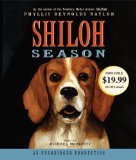
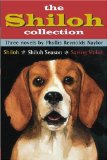
The Kite Fighters by Linda Sue Park. Set in 15th century Korea, Korea’s Golden Age, two brothers — one skilled in kite making and the other skilled in kite flying — combine their skills to compete in a kite flying contest on behalf of the king. [ages 7-12]
If your child liked The Kite Fighters, try A Single Shard by the same author which won the Newbery Medal.

A Single Shard by Linda Sue Park. Set in 12th century Korea during the Koryo era, an orphan who ends up working for a celebrated celadon potter is able to realize his own potential. [ages 8-12]
If your child liked The Kite Fighters or The Rickshaw Girl, this is a good choice.

Rickshaw Girl by Mitali Perkins. Set in Bangladesh, a daughter of a sick rickshaw driver strives to earn money for her family. The length of this book is not intimidating and there are small illustrations scattered throughout to break up the chapters. If your child can read Diary of a Wimpy Kid, this is a great book to read independently with a smidge of help. [ages 7-12]
If your child liked Rickshaw Girl, try The Kite Fighters or A Single Shard by Linda Sue Park.

A Year Down Yonder by Richard Peck. I have just discovered this Newbery Award-winning author and I have to say he’s an amazing story teller. A Year Down Yonder is the Newbery Award winning book, and it’s the sequel to A Long Way From Chicago. While this book is set in a small country bumpkin town during the Great Depression, it’s a hilarious story about fifteen-year-old Mary Alice who is sent to live with her Grandma for a year during the Great Depression while her parents get situated. Grandma Dowdel is a force to be reckoned with; her resourcefulness is matched by her heart of gold and Mary Alice’s year is filled with enough drama to fill a newspaper. A Long Way from Chicago is from Mary Alice’s older brother’s perspective during their eight summers at Grandma Dowel’s farm and the antics they got into. It also gives a gentle history on how the Great Depression impacted their community. [ages 8-12]

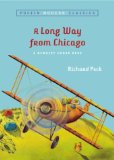
Fair Weather by Richard Peck. Thirteen-year-old Rosie Beckett and her siblings’ lives are about to change forever when a distant aunt sends them tickets to visit her in Chicago to visit the 1893 World Fair. Not only are their adventures hilarious, butyou feel like you are stepping back in time and visiting the World Fair which would be ten times more amazing than our modern day equivalent of visiting Disney World & Epcot Center. [ages 8-12]

The Lightening Thief by Rick Riodan. This is “Harry Potter meets Greek Mythology” and it’s a fantastic read! It’s such a page-turner that I stayed up to 2 a.m. to finish it! This is a MUST READ before the movie comes out!
Percy Jackson is an ADD, dyslexic 6th grade hero who has trouble staying in school because, as it turns out, he’s no ordinary human but a half-blood related to one of the big three in Greek Mythology. He must find and return Zeus’ lost lightening bolt to prevent WWIII. This series makes Greek Mythology come alive so I’ve included a Greek Mythology book as well. The level of difficulty is slightly easier than Book 1 of Harry Potter; this book is 375 pages long, normal sized type. [ages 8-14]



 (boxed set of first three books, $11.69)
(boxed set of first three books, $11.69)


 (boxed set of all 5 books, $51.97)
(boxed set of all 5 books, $51.97)
How to Eat Fried Worms by Thomas Rockwell. Can Billy win the bet by eating a worm a day for fifteen days?
This book has very short chapters with illustrations. The story is really appealing to boys. [ages 8-12]
If your child liked How to Eat Fried Worms, try The Enormous Egg by Oliver Butterworth or The Seven Wonders of Sassafras Springs by Betty G. Birney.

Holes by Louis Sacar. Every boy who has read this book seems to love it. It’s on my list to read. I’ve read a bunch of other titles by Sacar and his weird, quirky characters seem to really appeal to children. [ages 8-11]
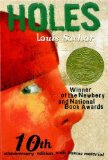
The Light at Tern Rock by Julia Sauer. A boy and his aunt are stranded tending the Tern Rock lighthouse . What will happen with Christmas right around the corner? [ages 7-10]

A Series of Unfortunate Events: The Bad Beginning by Lemony Snicket. This is a series about three very unlucky children, the Baudelaire siblings, who are magnets for misfortune. In the first book, The Bad Beginning, their family home burns to the ground with their parents inside rendering them orphans. It goes from bad to worse when they are left in the care of an evil distant relative, Count Olaf. Fortunately, the children are clever and resilient and their misadventures have a comic book-like appeal. [ages 6-10]
If your child likes this series, try The Willoughbys by Lois Lowry.
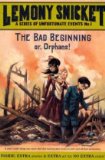



Riding Freedom by Pam Munoz Ryan. An orphan girl who lives in an orphanage for boys rides a horse named Freedom to safety. [ages 7-10]

The Invention of Hugo Cabret by Brian Selznick. This book is deceptively thick because it’s 250+ pages of illustrations that tell part of the story that I call “The Phantom of the Opera” of children’s literature. Set in 1930’s Paris, Hugo Cabret is an orphan with a talent for all things mechanical. The key to his future, he believes, is unlocking the secret of an automaton “wonder.” With other interlocking stories that weave together, this is a riveting story about the power of friendships, magic and perseverance. [ages 8-12]
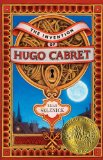
Maniac Magee by Jerry Spinelli. Jeffrey “Maniac” Magee, an orphan and an athlete of legendary acclaim, breaks the racial barrier existing between two neighboring towns. If your child is a reluctant reader, this might be a 4th grade or 5th grade read. It’s about the same difficulty level as the Ramona the Pest series. [ages 10-15]

Non-Fiction
Invaders from Outer Space by Phillip Brookes. (Level 3: Reading Alone)

Secrets of the Mummies by Harriet Griffey. (Level 4: Proficient Readers).
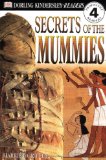
Ice Mummy, The Discovery of a 5,000-Year-Old-Man by Mark Dubowski and Cathy East Dubowski. Step 4, Reading Paragraphs, Grades 2-3.

The Titantic: Lost and Found by Judy Donnelly. Step into Reading, Level 4. Grades 2-3.

Tut’s Mummy, Lost…and Found by Judy Donnelly. Step 4, Reading Paragraphs, Grades 2-3.
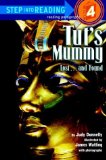
Owen and Mzee: The True Story of a Remarkable Friendship by Craig Hatkoff. [ages 6-10]
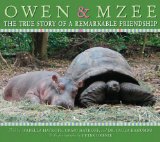
Owen and Mzee: The Language of Friendship by Craig Hatkoff. [ages 6-10]

The website, The Art of Manliness, has posted a list of 50 Best Books for Boys and Young Men: http://artofmanliness.com/2009/11/15/50-best-books-for-boys-and-young-men/

